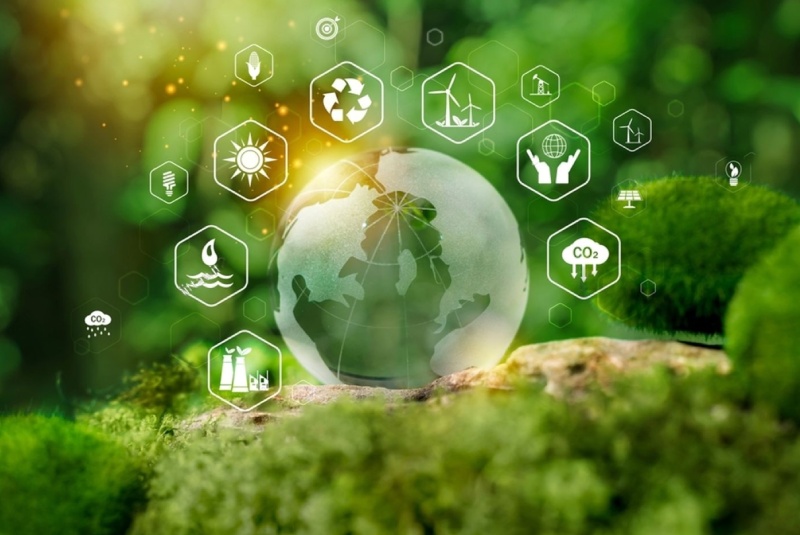
ESG (Environmental, Social, and Governance) objectives extend beyond current trends; they represent a company’s commitment to environmental responsibility, social stewardship, and sound corporate governance. While many organizations prioritize areas such as recycling or energy efficiency, cleaning practices are frequently underestimated in their potential impact on ESG performance. The methods and products utilized for maintaining workplace cleanliness can significantly influence outcomes within ESG frameworks. Adopting green cleaning strategies aligns with environmental standards by reducing toxicity and waste generation. It is essential to assess whether existing cleaning protocols are consistent with the ESG goals of the organization, its clients, and applicable local regulations.
Green cleaning encompasses the selection of methods and products specifically engineered to minimize environmental impact without compromising high standards of cleanliness. This typically involves using biodegradable cleaning agents, low-VOC formulations, equipment that conserves energy and water, supplies that promote indoor air quality, and practices focused on reducing packaging and product disposal waste. Leading professional cleaning service providers integrate these environmentally responsible principles into their services, supporting client sustainability initiatives effectively.
A comprehensive green cleaning policy advances key environmental benchmarks within ESG frameworks through the reduction of toxic substances and waste. Employing less hazardous products protects both air and water quality by preventing the introduction of harmful chemicals into ventilation systems and local waterways. Furthermore, it minimizes hazardous waste, facilitating safer disposal practices and greater regulatory compliance. Transitioning to environmentally preferable cleaning solutions has resulted in measurable decreases in chemical waste and improvements in indoor air quality, directly enhancing both environmental and employee wellness metrics. These tangible outcomes underscore the substantial contribution that sustainable cleaning practices can contribute to overall ESG performance.
Incorporating ESG Principles into Commercial Cleaning Strategies
Each project/client has unique operations and goals, so a one-size-fits-all approach to cleaning rarely works, especially when ESG performance is a priority. Cleaning service providers must ESG ready policies and cleaning plans are designed to meet specific sustainability targets and align with certifications like “LEED, Estidama, WELL”. These plans consider factors such as building type, industry requirements, and the environmental standards you aim to achieve. Cleaning Providers must work with their clients to create cleaning programs that not only meet cleanliness standards but also directly contribute to measurable ESG outcomes. This ensures that the cleaning strategy becomes a proactive part of the sustainability roadmap.
Aligning cleaning practices with ESG goals can support sustainability objectives and influence business performance. The use of safer, eco-friendly products may lower liability risks and support compliance with environmental regulations. Healthier indoor environments are associated with changes in employee productivity and wellbeing, which can affect service delivery outcomes. Furthermore, reducing chemical usage and adopting ecofriendly equipment can help minimize the financial and operational impacts on organizations.
ESG isn’t just about protecting the environment, it’s also about caring for people. Safer, green cleaning practices create healthier workplaces by reducing exposure to harsh chemicals and improving indoor air quality. This can lead to fewer illnesses, fewer allergyrelated issues, and an overall boost in employee well-being. A healthier work environment also supports higher productivity and employee satisfaction, which benefits the organization. By prioritizing health and safety through green cleaning, businesses fulfil the “S” in ESG demonstrating a genuine responsibility to employees, customers, and building occupants and adding value to the corporate social responsibility.
Governance in ESG focuses on transparency, compliance, and consistent performance. In cleaning operations, this means having clear policies, regular audits, and proper documentation to prove adherence to both industry and environmental standards. Adopting Green Cleaning policies organizations ensure this governance practices are built into their cleaning strategy from day one. Their teams follow strict protocols, maintain thorough service records, and comply with ESG-related requirements, helping clients to always stay ready for the audits. This structured, accountable approach builds trust with stakeholders and reinforces your company’s commitment to responsible business practice
Procedures for Aligning Cleaning Operations with ESG Objectives
- Begin by examining your current cleaning practices. Take inventory of all cleaning supplies, Equipment, review usage and application methods, and assess daily operational routines. This assessment can identify areas that may not align with ESG objectives, such as high chemical usage, misuse of equipment, wastegate control etc.
- Establish well-defined objectives that are closely aligned with your organization's strategic priorities. For environmental targets, consider initiatives such as minimising chemical usage, reducing water consumption, and investing in energy-efficient equipment. Social objectives may include enhancing employee health and promoting workplace wellness. In terms of governance, goals can encompass preparing for certifications like LEED, ISTEDAMA, and WELL, as well as ensuring full compliance with relevant policies.
- Cleaning service providers can partner with suppliers knowledgeable in ESG to deliver customised solutions that support environmental, social, and governance goals. Eco-friendly cleaning plans help maintain high standards of cleanliness and sustainability without compromising service quality.
- Monitor your progress using IoT and AI tools that deliver quantifiable results. Utilise platforms offering transparent dashboards and comprehensive service reports to enhance visibility into utilisation and performance metrics. This information facilitates the effective communication of ESG achievements to stakeholders.
- ESG alignment is continuous, requiring regular audits, feedback collection, and policy updates. Ongoing improvement ensures your ESG plan matches current standards and expectations. Adopting eco-friendly products, efficient equipment, and effective tracking supports environmental, social, and governance goals. Working with sustainable providers enables organizations to meet green targets without losing efficiency.
About the author
Sajjad Akram is a Sajjad Akram Soft FM Expert Consultant at Masdar City.

 (1).jpg)
.jpg)
 Search
Search.jpg)
